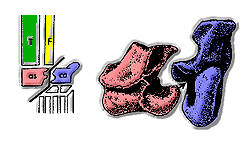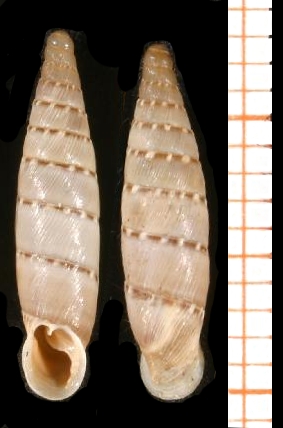Suture (anatomy)
Suture (anatomy)
A suture in anatomy refers to a type of fibrous joint that is only found in the skull. These joints are bound together by Sharpey's fibers, a matrix of connective tissue consisting of strong collagenous fibers. Sutures are immovable (synarthroses) and are important for the protection of the brain and the shape of the face.
Types of Sutures[edit | edit source]
Sutures can be classified into several types based on their shape and the bones they connect:
- Coronal suture: This suture runs horizontally, connecting the frontal bone with the parietal bones.
- Sagittal suture: This suture runs along the midline of the skull, connecting the two parietal bones.
- Lambdoid suture: This suture connects the parietal bones with the occipital bone.
- Squamosal suture: This suture connects the parietal bone with the temporal bone.
Function[edit | edit source]
Sutures play a crucial role in the growth and development of the skull. During infancy and childhood, the sutures are flexible, allowing for the growth of the brain and skull. As a person ages, these sutures gradually ossify and become more rigid.
Clinical Significance[edit | edit source]
- Craniosynostosis: A condition where one or more of the cranial sutures fuse prematurely, leading to abnormal skull shape and potentially affecting brain development.
- Fontanelle: The soft spots on a baby's skull where the sutures intersect. These areas allow for the rapid growth of the brain during infancy.
Related Structures[edit | edit source]
- Fontanelle: The soft membranous gaps between the cranial bones in an infant's skull.
- Synostosis: The fusion of two bones, which can occur naturally or as a result of a pathological process.
See Also[edit | edit source]
References[edit | edit source]
External Links[edit | edit source]
Search WikiMD
Ad.Tired of being Overweight? Try W8MD's physician weight loss program.
Semaglutide (Ozempic / Wegovy and Tirzepatide (Mounjaro / Zepbound) available.
Advertise on WikiMD
|
WikiMD's Wellness Encyclopedia |
| Let Food Be Thy Medicine Medicine Thy Food - Hippocrates |
Translate this page: - East Asian
中文,
日本,
한국어,
South Asian
हिन्दी,
தமிழ்,
తెలుగు,
Urdu,
ಕನ್ನಡ,
Southeast Asian
Indonesian,
Vietnamese,
Thai,
မြန်မာဘာသာ,
বাংলা
European
español,
Deutsch,
français,
Greek,
português do Brasil,
polski,
română,
русский,
Nederlands,
norsk,
svenska,
suomi,
Italian
Middle Eastern & African
عربى,
Turkish,
Persian,
Hebrew,
Afrikaans,
isiZulu,
Kiswahili,
Other
Bulgarian,
Hungarian,
Czech,
Swedish,
മലയാളം,
मराठी,
ਪੰਜਾਬੀ,
ગુજરાતી,
Portuguese,
Ukrainian
Medical Disclaimer: WikiMD is not a substitute for professional medical advice. The information on WikiMD is provided as an information resource only, may be incorrect, outdated or misleading, and is not to be used or relied on for any diagnostic or treatment purposes. Please consult your health care provider before making any healthcare decisions or for guidance about a specific medical condition. WikiMD expressly disclaims responsibility, and shall have no liability, for any damages, loss, injury, or liability whatsoever suffered as a result of your reliance on the information contained in this site. By visiting this site you agree to the foregoing terms and conditions, which may from time to time be changed or supplemented by WikiMD. If you do not agree to the foregoing terms and conditions, you should not enter or use this site. See full disclaimer.
Credits:Most images are courtesy of Wikimedia commons, and templates, categories Wikipedia, licensed under CC BY SA or similar.
Contributors: Prab R. Tumpati, MD





